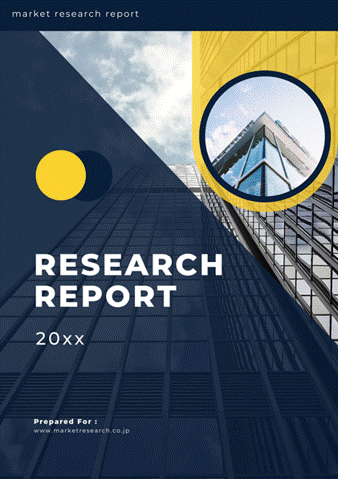 | • レポートコード:D0-MOR-AP1096 • 出版社/出版日:Mordor Intelligence / 2020年3月 • レポート形態:英文、PDF、120ページ • 納品方法:Eメール(受注後2-3営業日) • 産業分類:化学品および材料 |
| Single User | ¥629,000 (USD4,250) | ▷ お問い合わせ |
| Team User | ¥703,000 (USD4,750) | ▷ お問い合わせ |
| Corporate License | ¥1,110,000 (USD7,500) | ▷ お問い合わせ |
• お支払方法:銀行振込(納品後、ご請求書送付)
レポート概要
| 本調査レポートは、鉄筋の世界市場について調査・分析した資料で、鉄筋の市場概要、動向、セグメント別市場規模、地域別分析、競争状況、企業情報、市場機会分析などで構成されています。 |
The market for steel rebar is expected to grow at a CAGR of over 4% during the forecast period. The major factor driving the Steel Rebar market is the rapidly growing construction industry in the Asia-Pacific region. On the flip side, unfavorable conditions arising due to the COVID-19 outbreak is hindering the growth of the market.
– The worldwide demand for steel rebar from the non-residential sector for the construction of commercial, infrastructural, religious, hotels, recreational, and educational buildings, is driving the market of Steel Rebar.
– Asia-Pacific region is forecasted to be the fastest-growing steel rebar market owing to the increasing investments for the construction of new projects for infrastructural expansion across various countries in the region.
Key Market Trends
Growing Demand from the Non-Residential Sector
– With increasing urbanization, steel rebars are experiencing its extensive utilization from the non-residential segment, like the oil & gas industry, infrastructure, commercial construction, corporate buildings, etc.
– In 2019, the global expenditure of the construction industry amounted to be about USD 11 trillion and it is currently estimated that by the end of 2025, the global construction industry expenditure is expected to reach about USD 14 trillion, thus profiting the market for Steel Rebar.
– A plan of investing over USD 450 billion into the nation’s infrastructure has been introduced by the Saudi Arabian government under its Saudi Arabia Vision Plan 2030. The idea is to diversify the economy by reducing the dependency on its oil & gas sector, thereby enhancing the government’s efficiency and society’s stability.
– Statistics show that the United States invested roughly USD 91.5 billion for new non-residential commercial construction in 2019. This spending is predicted to further grow over the coming years.
– All the above mentioned factors are expected to propel the demand for steel rebar during the forecast period.
Asia-Pacific Region to Dominate the Market
– Asia-Pacific is anticipated to be the largest consumer of the steel rebar as a result of the infrastructure development in emerging countries and upcoming projects in the region.
– By the end of 2020, the Asia-Pacific region is projected to lead the construction spending accounting for almost 46% of the share globally with counties like China, India, Indonesia making the major contribution in the industry.
– The Indian government has made a recent announcement of its plan which includes the construction of 100 smart cities across the nation and expanding its infrastructure by infusing USD 28.18 billion for the upcoming project.
– The Chinese government has rolled out massive construction plans, including making provisions for the movement of 250 million people to its new megacities, over the next ten years, despite efforts to rebalance its economy to a more service-oriented form.
– Thus, rising demand from various countries is expected to drive the market studied in the region during the forecast period.
Competitive Landscape
The Steel Rebar market is partially fragmented. Some of the players operating in the business include ArcelorMittal, Gerdau S/A, SAIL, Nucor, and Mechel.
Reasons to Purchase this report:
– The market estimate (ME) sheet in Excel format
– 3 months of analyst support
1 INTRODUCTION
1.1 Study Assumptions
1.2 Scope of the Study
2 RESEARCH METHODOLOGY
3 EXECUTIVE SUMMARY
4 MARKET DYNAMICS
4.1 Drivers
4.1.1 Rapidly Growing Construction Industry in Asia-Pacific Region
4.1.2 Other Drivers
4.2 Restraints
4.2.1 Unfavourable Conditions Arising Due to COVID-19 Outbreak
4.2.2 Other Restraints
4.3 Industry Value Chain Analysis
4.4 Porters Five Forces Analysis
4.4.1 Threat of New Entrants
4.4.2 Bargaining Power of Buyers
4.4.3 Bargaining Power of Suppliers
4.4.4 Threat of Substitute Products
4.4.5 Degree of Competition
5 MARKET SEGMENTATION
5.1 Type
5.1.1 Deformed
5.1.2 Mild
5.2 End-user Industry
5.2.1 Residential
5.2.2 Non-Residential
5.2.2.1 Commercial
5.2.2.2 Infrastructure
5.2.2.3 Institutional
5.3 Geography
5.3.1 Asia-Pacific
5.3.1.1 China
5.3.1.2 India
5.3.1.3 Japan
5.3.1.4 South Korea
5.3.1.5 Rest of Asia-Pacific
5.3.2 North America
5.3.2.1 United States
5.3.2.2 Canada
5.3.2.3 Mexico
5.3.3 Europe
5.3.3.1 Germany
5.3.3.2 United Kingdom
5.3.3.3 France
5.3.3.4 Italy
5.3.3.5 Rest of Europe
5.3.4 South America
5.3.4.1 Brazil
5.3.4.2 Argentina
5.3.4.3 Rest of South America
5.3.5 Middle-East and Africa
5.3.5.1 Saudi Arabia
5.3.5.2 South Africa
5.3.5.3 Rest of Middle-East and Africa
6 COMPETITIVE LANDSCAPE
6.1 Mergers and Acquisitions, Joint Ventures, Collaborations, and Agreements
6.2 Market Share/Ranking Analysis**
6.3 Strategies Adopted by Leading Players
6.4 Company Profiles
6.4.1 ArcelorMittal
6.4.2 Celsa Steel (UK) Ltd.
6.4.3 Contractors Materials Company
6.4.4 Daido Steel Co., Ltd.
6.4.5 Essar Steel
6.4.6 Gerdau S/A
6.4.7 HYUNDAI STEEL
6.4.8 JFE Steel Corporation
6.4.9 Jiangsu Shagang Group Co., Ltd.
6.4.10 KOBE STEEL, LTD.
6.4.11 Mechel
6.4.12 NIPPON STEEL CORPORATION
6.4.13 Nucor
6.4.14 POSCO SS VINA, Co. Ltd.
6.4.15 SAIL
6.4.16 Sohar Steel Group
6.4.17 Tata Steel
7 MARKET OPPORTUNITIES AND FUTURE TRENDS